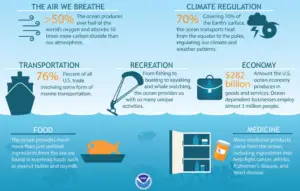Table of Contents
Peatland its Significance and threats | UPSC- IAS
Peat, also known as turf, is an accumulation of partially decayed vegetation or organic matter. It is unique to natural areas called peatlands, bogs, mires, moors, or muskegs. Peats are a heterogeneous mixture of plant material (vascular plants, mosses and humus) that had accumulated in a water-saturated area and are only partially decomposed due to absence of oxygen.
Some Uses of Peat are as follows:-
- Peat is used in water filtration, such as for the treatment of septic tank effluent and for urban runoff. Also widely used in balneotherapy (the use of bathing to treat disease).
- Peat is sometimes used in freshwater aquaria. It is seen most commonly in soft water or blackwater river systems such as those mimicking the Amazon River basin.
They are mostly found in permafrost regions towards the poles and at-
- High altitudes,
- In coastal areas,
- Beneath tropical rainforest and
- In boreal forests.
Countries with largest peatland areas are – Russia, Canada, Indonesia, USA, Finland etc.
Several multilateral conventions take peatland into consideration such as:- UNFCCC, Ramsar Convention on Wetlands, Convention on Biodiversity and United Nation Convention to Combat Desertification.
- Brazzaville Declaration: was signed to promote better management and conservation of Cuvette Centrale Region in Congo Basin in the backdrop of the 3rd Conference of Partners of the Global Peatlands Initiative (GPI), 2018.
- Global Peatlands Initiative: is an effort by leading experts and institutions to save peatlands as the world’s largest terrestrial organic carbon stock and to prevent it being emitted into the atmosphere. It is led by UN Environment.
Significance of Peatland | UPSC – IAS
Peatlands are highly significant to global efforts to combat climate change, as well as wider sustainable development goals. The protection and restoration of peatlands is vital in the transition towards a low-carbon and circular economy.
- Carbon Storage: Although they cover less than 3% of the global surface, estimates suggest that peatlands contain twice as much carbon as in the world’s forest.
- Supporting water cycle: They regulate water flow, exert a cooling effect during hot periods through evaporation and cloud formation, play an important role in retention of pollutants and nutrients and water purification, counteract eutrophication of water bodies and also prevent intrusion of saltwater.
- Supporting unique and critically threatened biodiversity: The tropical peatlands are home to a number of endangered species, including Sumatran tigers, gorillas and orangutans.
- Supporting livelihood: They are source of berries, mushrooms and medicinal plants in boreal and temperate regions and of non-timber forest products in tropical regions. Even the peat itself is used as fuel.
- As a cultural landscape and archive: They hold some of the most evocative archeological discoveries of last decades such as 4th millennium BCE footpath ‘sweet tracks’. They also record environmental changes.
Threats to Peatlands | UPSC – IAS
- Drainage for agriculture: Drained peatlands are mainly used for agriculture and forestry, and peat is extracted for horticulture and energy production. CO2 emissions from drained peatlands are estimated at 1.3 gigatonnes of CO2 annually. This is equivalent to 5.6% of global anthropogenic CO2 emissions.
- Commercial Forestry: It is the second greatest cause of land-use changes in peatland mostly prevalent in Scandinavian countries, UK, Russia, South-East Asia etc.
- Peat extraction and usage: Peat as a source of energy is being used on a large scale by households. It is also used as raw material for producing growing media for professional horticulture and for home gardening.
- Infrastructure Development: Conversion of peatlands in coastal areas to meet the urban development, waste disposal needs, development of roads and other infrastructure.
- What happens when peatlands are degraded or destroyed – Peatland destruction leads to releasing vast amounts of CO2; – Burning, draining, and degrading peat bogs emits carbon dioxide equivalent to more than one tenth of the global emissions released from burning fossil fuels.
A Way forward | UPSC – IAS
- A landscape approach is vital and good practices in peatland management and restoration must be shared and implemented across all peatland landscapes to save these threatened ecosystems and their services to people.
- Rewetting: It is an essential step in the restoration of Peatlands as they rely on waterlogged conditions for their survival.
- Plaudiculture and sustainable management techniques: It is a practice of crop production on wet soils, predominantly in peatlands. Other sustainable techniques could be cultivation of fish or pursuit of ecotourism.
- Legal and Fiscal environment and Policies: Various policies that have been put in place both at global as well domestic levels should be implemented properly.
- Local communities should receive support to sustainably manage their peatlands by preserving traditional non-destructive uses and introducing innovative management alternatives.
- Creating a market to finance peatland management: Using Funding mechanism such as Green Bonds, private capital (equity and debt), funding from government sources etc.
- Institutional framework for coordinated action: Integrated global partnerships should be established.
- Restricting new agriculture & industrial activities that threaten their long-term viability and developing long-term land use policies which favour conservation and protection of peatlands.
- Capacity building: Focused action is required with support from developed countries for capacity building, outreach and awareness raising.
- A comprehensive mapping of peatlands worldwide is essential to better understanding their extent and status, and to enable us to safeguard them.




